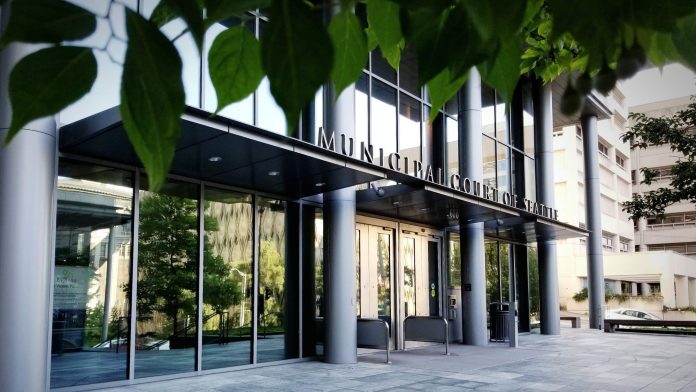
Last week I wrote about Pooja Vaddadi’s race to oust incumbent Judge Adam Eisenberg from the Seattle Municipal Court. Vaddadi contrasts her competence and fair-minded approach with Eisenberg’s shortcomings. I argued that Vaddadi’s intellect, command, and history of service make it exceedingly important to vote for her when juxtaposed against the incumbent’s obvious errors and swirling allegations of sexism.
But the other distinction is Vaddadi’s “restorative justice” approach to addressing misdemeanor crime. The term is not exactly self-interpreting, and I have found that it is used pretty promiscuously by progressives. Even Eisenberg claims to embrace it! He points to a program of diversion within the court system. Whatever its merits, it is not restorative justice. His assertion otherwise appears like a deliberate misrepresentation or sophomoric incompetence, neither of which I care to see in a judge.
Since the concept is poorly understood by the public, and apparently even the Presiding Judge at the Seattle Municipal Court, I thought it made sense to dig a bit deeper, and to think about the relationship between restorative justice and urbanism.
A path to responsibility and healing
Restorative justice works by bringing together impacted people to figure out an appropriate way to deal with the consequences of an infraction and its implications for all interested parties. The goal is to restore a healthy community by ensuring that the offender takes responsibility, that interested parties determine a proper way to make amends, and that the victim’s needs are addressed.
Practitioners advocate for voluntary, safe, facilitated meetings between those impacted by the crime and the offender. However, this is only on the table if the offender takes responsibility for their actions and shows readiness to make things right. Interested parties then determine what would accomplish this, with eyes on the victim who needs to heal, the perpetrator who needs to make amends, and the community which needs a strong sense of safety.
Why practice restorative justice?
Before we discuss alternatives to contemporary criminal law, we have to consider a deeper question, which is “why punish?” After all, if we don’t even agree what punishment is for, it’s tough to make any headway in discussing the merits of any particular approach.
Typically, discourse around criminal punishment mashes up some combination of four purposes: retribution, rehabilitation, incapacitation, and deterrence. Restorative justice mostly cuts across two: rehabilitation and retribution.
First and foremost, restorative justice is rehabilitative, and it shares some of the core assumptions of all rehabilitative approaches. Criminal activity is almost always driven by desperation, trauma, or behavioral disorders. Because of this, practitioners recognize that we should think twice before demonizing the perpetrators of misdemeanor criminal acts — as if such actions happen in a vacuum, ex-nihilo. Finally, restorative justice focuses on the fact that the desperation, trauma and behavioral health issues that lead to crime can be addressed for most people, thereby preventing future criminal acts and bringing the treated person back into healthy community life.
On the rehabilitative front, restorative justice works pretty darn well. According to the leading meta-analysis restorative justice practices significantly reduce the likelihood that an offender will reoffend, compared to other methods. This also aligns with decades of studies showing that incarceration without meaningful rehabilitation is a path to more crime, not less. In other words, restorative justice is a real route to a safer Seattle, and is a much more serious alternative than the silly security theater peddled by Seattle’s self-styled “centrists.”
Second, restorative justice draws from a universal instinct that lies behind retribution, even if it rejects retribution as a legitimate aim itself. You may have noticed that discussions of justice abound with metaphors about balance. Justice is often even visualized as a blindfolded woman with a sword in one hand and a scale in another. But with restorative justice, balance is restored not through inflicting pain or “repaying your debt to society” but through restitution for deeds done and restoration to the community. As the leaders of the aforementioned meta-analysis note, the “the fundamental premise of the restorative justice paradigm is that crime is a violation of people and relationships rather than merely a violation of law.” The most appropriate response to criminal behavior, therefore, is to repair the harm caused by the wrongful act.
If repairing harm rebalances the scales, restorative justice is successful on that front as well. Offenders “have substantially higher compliance rates than offenders exposed to other arrangements,” according to the research. Moreover, the victims come out better. “Compared to victims who participated in the traditional justice system, victims who participated in restorative processes were significantly more satisfied.” Offenders too, see improved satisfaction, though the effect is more modest.
Bringing it back to the community
Restorative justice practitioners never take their eye off the community in which the acts of victimization and restoration occur. The community and its social trust are, after all, damaged by victimization and can be healed by restoration. This is where restorative justice should catch the attention of urbanists.
Whereas the traditional carceral system drives people toward more trauma and reoffense, restorative justice interrupts the doom loop by healing both the offender and the offended alike. It increases the confidence of the populace, and the additional social trust engenders makes building engaged, inclusive cities far more possible. For anyone interested in the larger practice of collaborating to build and sustain healthy, inclusive communities – it’s easy to see that restorative justice naturally nests inside this effort.
We cannot have the thriving, inclusive shared spaces we so desire, that are the visible manifestations of healthy communities, without public trust and public safety. They are co-requisites with civil rights, universal education, and curbs on oligarchic power. Social trust is one of the core pillars of any city. Restorative justice is a key component of how we build, maintain and repair that trust.
In short, restorative justice is a better choice for our city and our civic life.

Ron Davis (Guest Contributor)
Ron Davis is an entrepreneur, policy wonk, political consultant, and past candidate for Seattle City Council. He is focused on making his community a place where anyone can start a career, raise a family, and age in place without breaking the bank. He has a JD from Harvard Law School and lives in Northeast Seattle with his wife — a family physician — and their two boys.

